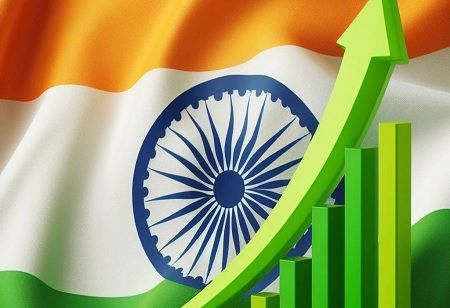
India Leads as Fastest-Growing Large Economy: UN Report

 India is likely to remain the world's fastest-growing large economy, with an annual growth rate of 6.6% in 2025, as projected by the United Nations' flagship report, World Economic Situation and Prospects 2025 (WESP). The report, released, projects a higher growth rate of 6.8% in 2026, fueled by strong domestic consumption, private investment, and strong export performance in services, pharmaceuticals, and electronics.
India is likely to remain the world's fastest-growing large economy, with an annual growth rate of 6.6% in 2025, as projected by the United Nations' flagship report, World Economic Situation and Prospects 2025 (WESP). The report, released, projects a higher growth rate of 6.8% in 2026, fueled by strong domestic consumption, private investment, and strong export performance in services, pharmaceuticals, and electronics.
Hamid Rashid, head of the UN's Global Economic Monitoring, said that against the backdrop of sluggish global growth, India's resilience has been remarkable. Significant capital expenditure on infrastructure development will have strong multiplier effects on economic activity, while expansion in the manufacturing and services sectors is likely to sustain the momentum through the forecast period.
Favorable monsoon rains in 2024 have come as a welcome relief to the agricultural sector, enhancing summer-sowing areas for major crops and increasing output prospects for 2025. Agriculture, therefore, becomes another plus factor for India's growth prospects, even though global challenges persist.
India's projected growth rate for 2025, while slightly below last year's 6.8%, remains significantly higher than the global average of 2.8%. Developed economies are expected to grow at a much slower pace, with the growth rate for these nations slipping to 1.6% compared to last year. China, the second fastest-growing large economy, is projected to grow at 4.8% in 2025, a decrease from previous estimates.
India's inflation is expected to stabilize somewhat, as consumer price inflation should decline from 4.8% in 2024 to 4.3% in 2025. This trend is on course with Reserve Bank of India's medium term target range of 2-6%. In fact, last year's inflationary shocks were the adverse weather conditions that resulted in higher prices at mid-year for vegetable and cereal staples, according to the report.
Employment continues to look upbeat, as evidenced by robust labor force participation in India for all of 2024. Urban unemployment held steady at 6.6% compared with the preceding year, only marginally above the 6.7% posted in 2023. Some progress was recorded in female labor market participation; however, it is disappointing to see that significant gaps in employment remain between men and women.
For South Asia, growth remains mixed with India taking the lead in regional growth. The report projects South Asia's overall growth at 5.7% in 2025 and 6% in 2026, led by India's strong performance and recovery in other regional economies. Pakistan and Sri Lanka are expected to grow modestly at 3.4% and 4%, respectively, as they continue to recover from downturns experienced in 2022–2023, contingent on resolving debt challenges. Bhutan and Nepal are likely to expand at more than 5%, but Bangladesh is going to slow down to 4.2% due to political unrest and uncertainty.
The report also warned about risks to the region's economic outlook, such as geopolitical tensions, slowing external demand, continuing debt challenges, and the effects of climate-related hazards. Extreme weather events have a big potential threat to the economic stability in South Asia.
India's ability to navigate global headwinds and maintain its position as the fastest-growing large economy shows that it has a long way to go in terms of economic potential. Strong fundamentals and some strategic investments ensure that it continues to be on the growth trajectory, despite global growth staying muted.